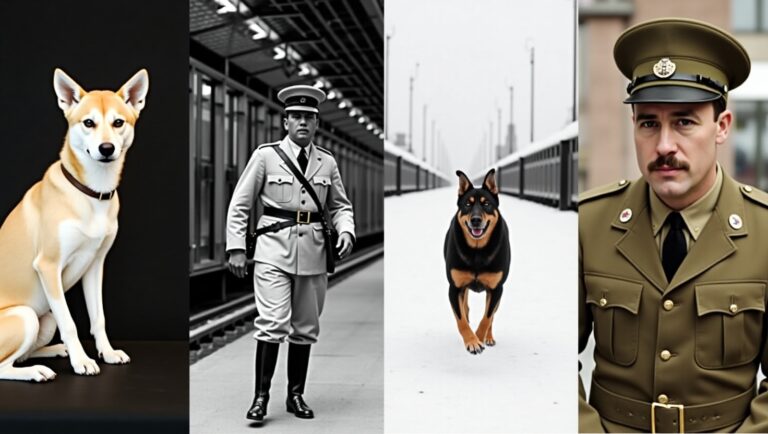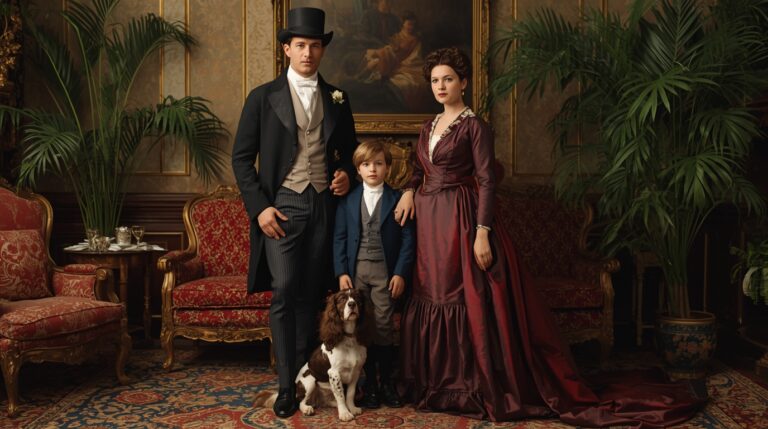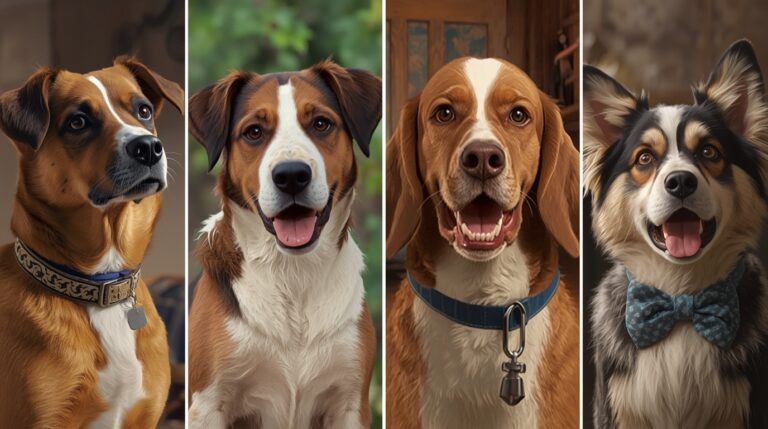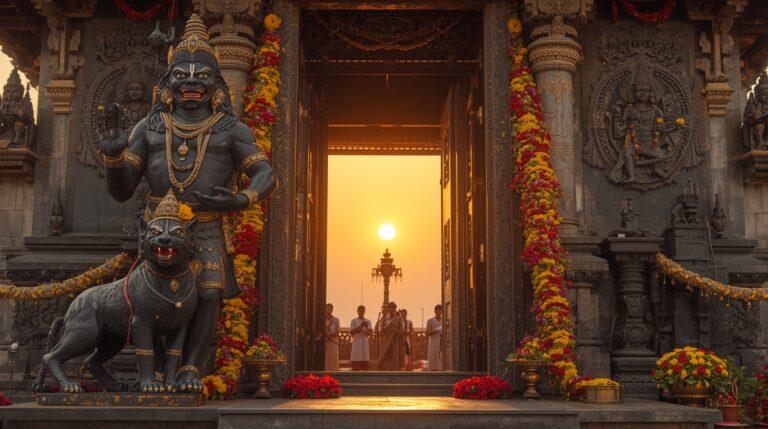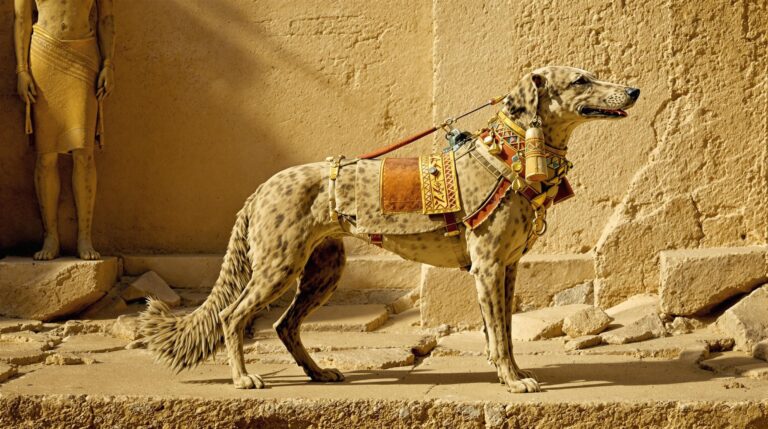Black Dogs and Folklore (Hellhounds, Grim)
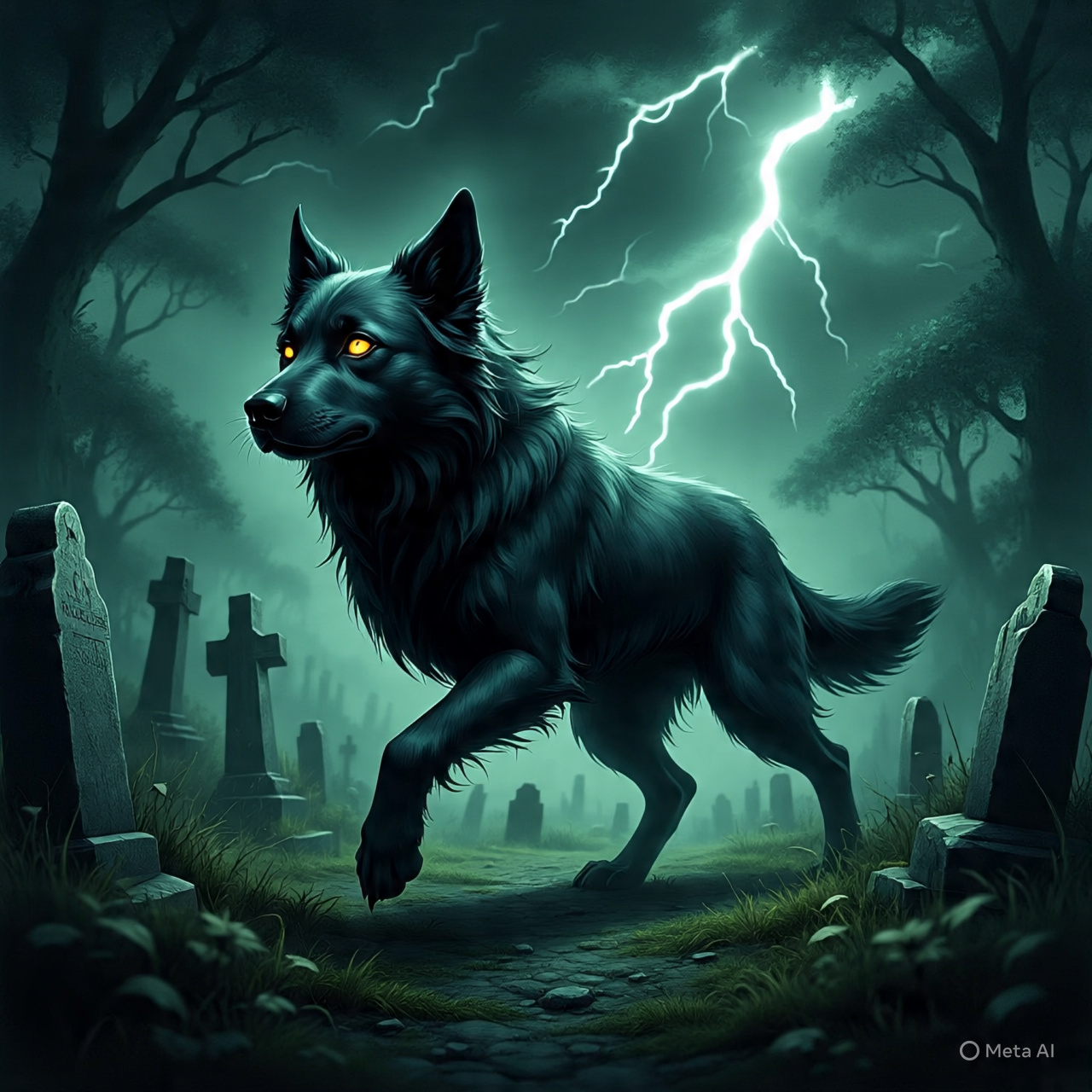
Introduction
Across Europe and beyond, legends speak of dark shadows prowling roads, graveyards, and churchyards—massive, black dogs with glowing red eyes, often appearing before tragedy strikes. These terrifying figures, known by many names—Hellhounds, Black Shuck, the Barghest, Church Grims—are powerful symbols of death, the supernatural, and the boundaries between life and the afterlife. Often feared, sometimes revered, these black dogs appear in tales from Norse, Greek, British, Celtic, and Christian traditions, each culture layering new meaning onto their mythic frames. Whether as death omens, guardians of sacred ground, or cursed wanderers, black dogs in folklore embody our most primal fears and spiritual fascinations.
Origins of the Black Dog in Folklore
The myth of the black dog is ancient, cross-cultural, and deeply symbolic. These spectral hounds have roots in Indo-European mythologies, particularly those involving death, the underworld, or spirit protection. In Greek mythology, the underworld was guarded by Cerberus; in Norse myth, Garmr watched over Hel. Early Christian communities inherited these motifs, transforming pagan guardians into satanic figures or divine protectors of churches.
Oral traditions fueled black dog legends through cautionary tales and deathbed stories. People believed that spotting a black dog meant impending doom, not because of canine nature, but because the black dog was often interpreted as a psychopomp—a supernatural guide that escorts souls into the next life.
Black Dogs as Omens of Death
Throughout European folklore, the appearance of a spectral black dog was considered a bad omen. In many rural English counties, it was believed that anyone who saw such a creature would soon die. This concept is especially prevalent in tales of the Barghest and Black Shuck, where the dog appears silently at night, often at crossroads, on church grounds, or during violent storms.
These black dogs are often described as unusually large, with glowing red or yellow eyes, and sometimes surrounded by the scent of brimstone. They are rarely heard—often silent watchers or invisible presences only detected by a sudden chill or the uneasy behavior of animals.
The Hellhound Archetype
The term “hellhound” has become widely used to describe any black dog associated with death or the demonic, but it has specific mythological roots. Hellhounds are typically underworld guardians, tasked with keeping the dead from escaping or preventing the living from entering sacred domains. Unlike ordinary dogs, hellhounds are immortal, terrifying, and often breathe fire or reek of sulfur. They’re supernatural creatures of divine or infernal design—liminal guardians of cosmic law.
In folklore, hellhounds are often tied to specific locations, especially where significant spiritual or emotional energy resides: old battlefields, plague pits, or crossroads.
Cerberus: The Greek Guardian of Hades
One of the most iconic black dogs in myth is Cerberus, the three-headed hound that guards the gates of the Greek underworld. A monstrous offspring of Typhon and Echidna, Cerberus prevented the dead from escaping and the living from entering. Each of Cerberus’s heads symbolized past, present, and future—or, in some interpretations, birth, life, and death.
Cerberus serves not as a demon, but a neutral guardian of cosmic order. He’s featured in the myths of Heracles, Orpheus, and Aeneas—all of whom venture into the underworld and must confront or bypass the beast.
Garmr: Norse Mythology’s Underworld Hound
In Norse mythology, Garmr is the blood-soaked guardian of Hel, the realm of the dead. Unlike Cerberus, Garmr is not multi-headed but is equally formidable. Bound until Ragnarok—the end of the world—Garmr will break free and battle the god Tyr in a fight that leads to both of their deaths. Garmr’s howls are said to echo through the Nine Realms as a sign of Ragnarok’s onset.
Much like Cerberus, Garmr embodies the theme of death’s inevitability and the sacred nature of boundaries between worlds.
Church Grims and Sacred Guardians
In Christian-era British folklore, the Church Grim is a protective black dog spirit said to inhabit churchyards. According to tradition, the first person—or animal—buried in a churchyard had to guard it against evil. To avoid damning a human soul to this duty, a black dog was often sacrificed and buried under the altar. This canine ghost then became the Church Grim, patrolling the grounds at night to defend the sanctity of the site.
The Grim was not malevolent but deeply feared, as its presence often heralded death or spiritual judgment.
The Barghest: Northern England’s Omen Dog
One of the most terrifying black dog legends comes from Yorkshire, where the Barghest is said to haunt the hills and moorlands. The name may derive from “bär geist,” meaning “spirit of the town.” This spectral beast could shift its size and form, becoming invisible or monstrous, and often appeared to those about to die.
In some tales, the Barghest would lie across the threshold of the doomed or appear beside their bed in their final hours. Its appearance was a death sentence—an unavoidable prophecy.
Black Shuck: East Anglia’s Ghost Dog
In East Anglia, England, Black Shuck is one of the best-known black dog apparitions. Descriptions vary, but it’s usually a huge, red-eyed hound. One of the most famous accounts dates to 1577, when a massive storm struck the town of Bungay. During the chaos, locals claimed that a monstrous black dog burst into the church, killing two people and leaving claw marks on the door—marks that still remain today.
Black Shuck is feared, but in some stories, it’s also protective—leading lost travelers to safety, guiding souls home, or keeping witches at bay.
The Wild Hunt and Spectral Hounds
The Wild Hunt is a ghostly procession seen across European folklore, often led by deities like Odin or mythical kings like Herne the Hunter. Accompanying these spectral riders are packs of black dogs—sometimes fiery, always terrifying.
In Norse and Germanic tales, these hounds hunt across the sky during storms. In Celtic folklore, the Cŵn Annwn (Hounds of the Otherworld) accompany Arawn, god of the underworld. Their howls foretell death, and they are said to chase the souls of the damned.
These ghost dogs serve as harbingers of judgment and guardians of supernatural justice.
Demonic and Devil Dog Legends
In early modern witchcraft trials and demonology, black dogs were sometimes described as “familiars”—spiritual beings that served witches or sorcerers. Descriptions often emphasized red eyes, chains, or the scent of sulfur, further cementing their association with hellish forces.
In some Christian traditions, hellhounds were believed to accompany the Devil himself, or even to act as agents of retribution, dragging unbaptized souls into the abyss. The conflation of pagan underworld guardians with Christian demonology turned many black dog legends from sacred to sinister.
Protective vs. Malevolent Black Dogs
While many stories paint black dogs as omens of death, others describe them as benevolent guardians. Some black dogs warned of oncoming danger, prevented accidents, or protected travelers from evil spirits.
For example, in parts of Scotland and Ireland, stories speak of a black dog who appears on mountain trails to prevent hikers from walking over hidden cliffs. Similarly, some Welsh legends describe the Cŵn Annwn not as hunters of the damned, but as escorts for noble souls.
This duality suggests that black dogs represent more than just doom—they embody the complex nature of spiritual guardianship.
Black Dogs in Celtic and Welsh Lore
Celtic mythology offers some of the richest black dog legends. The Cŵn Annwn, mentioned earlier, are white-bodied with red ears, yet their reputation is akin to hellhounds. They serve Arawn and travel the night skies seeking souls. Their barking grows quieter the closer they are, adding eerie suspense to their legend.
In Scotland, the Cu Sith (fairy hound) is a giant, dark green or black dog that haunts the Highlands. It’s both feared and respected. Hearing its howl three times was said to bring death.
The Church Grim in Scandinavian and British Tales
In Scandinavia, similar myths to the British Church Grim exist. The Natteravn, or “Night Raven,” was often accompanied by a black dog that protected sacred grounds from trolls and evil spirits. The British version, as discussed, involved sacrificing a black dog to spiritually “anchor” the churchyard.
In both traditions, the Grim’s presence became part of the sanctity of the church. To see it was either a blessing of protection or a reminder of mortality.
Symbolism of the Color Black in Myth
Black has long been associated with mystery, death, and the unknown. In folklore, black dogs are not just frightening because of their behavior, but because their color reinforces their supernatural quality.
Black absorbs light, making it a metaphor for the unknown or the invisible. In storytelling, the black dog becomes a vessel for human fears—of death, punishment, and divine judgment.
Black Dogs and Crossroads Symbolism
Crossroads are spiritual liminal spaces—where decisions are made, and souls are judged. In many legends, black dogs appear at these intersections, reinforcing their role as psychopomps.
To see a black dog at a crossroads was often interpreted as a test: a choice between safety and danger, wisdom and folly, or life and death. This symbolism survives in literature and occult practice to this day.
Dreams and Visions of Black Dogs
To dream of a black dog is often interpreted as a subconscious confrontation with fear, death, or transformation. In Jungian psychology, it may represent the “shadow self”—a part of the psyche containing repressed thoughts or emotions.
In folklore, dream-visits from a black dog could be warnings or visitations from ancestors. If the dog is calm or leading, it may represent a protector spirit. If it’s aggressive or silent, it could be a harbinger of grief or change.
Modern Interpretations and Urban Legends
Today, black dogs appear in horror fiction, movies, and urban legends. Shows like Supernatural and games like Diablo include hellhounds as fearsome adversaries. Literature uses black dogs as symbols of despair or demonic presence—often drawing on centuries of folklore.
Urban legends in the U.S. and Europe still tell of phantom dogs appearing on backroads, by cemeteries, or during sleep paralysis episodes, linking ancient myth to modern fears.
The Black Dog as Depression Symbol
The term “black dog” has also become associated with depression, most famously used by Winston Churchill. In modern psychology, the black dog represents a persistent, shadow-like presence—difficult to shake and always watching.
This reinterpretation echoes folklore: a dark, silent companion that walks with us through difficult transitions. Some mental health campaigns now reclaim the black dog image, transforming it from a feared omen into a metaphor for endurance and healing.
Conclusion
Black dogs in folklore are as complex as they are terrifying. They are not simply demons or harbingers of death, but sacred guardians, boundary keepers, and eternal watchers. From Cerberus to Black Shuck, Church Grims to the Barghest, these shadowy figures remind us of life’s fragility, death’s mystery, and the thin veil that separates the worlds.
Whether feared, respected, or reimagined, the myth of the black dog persists because it speaks to something deeper than superstition—it speaks to our need for symbols that guard, guide, and challenge us through the unknown.

